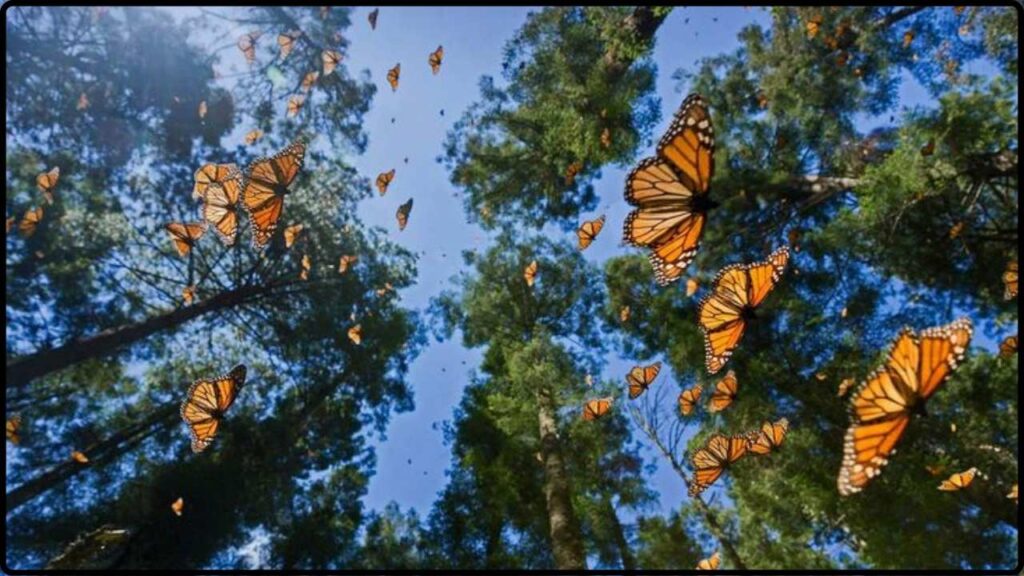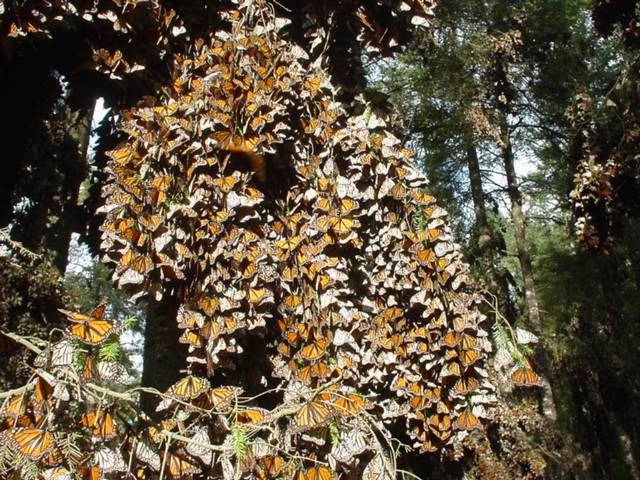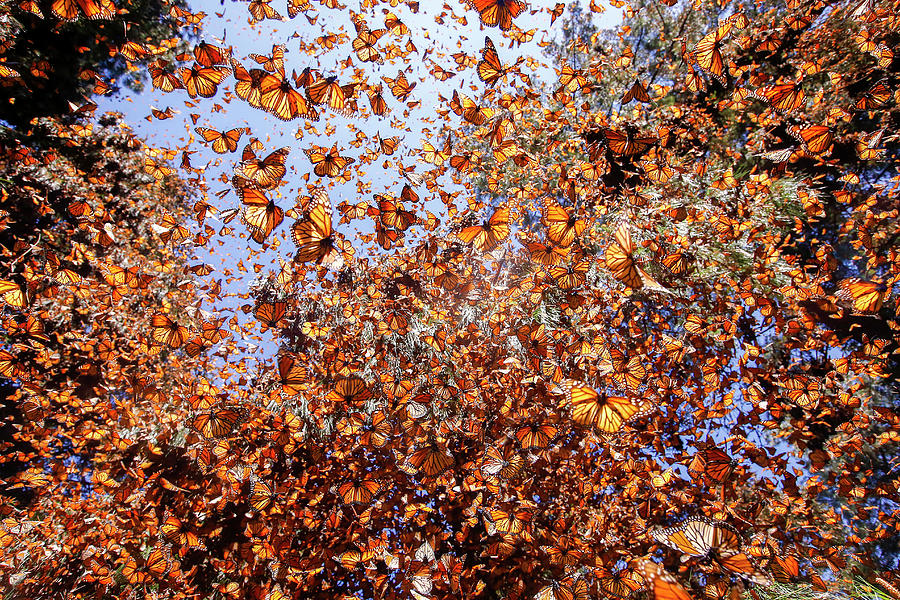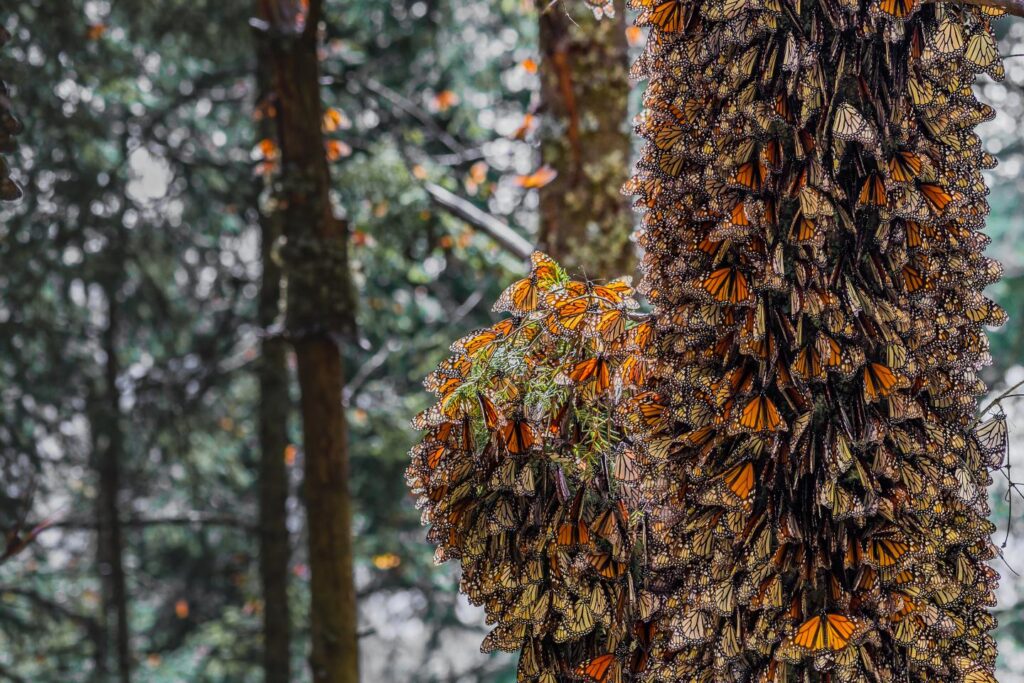Mountains Are Mysteriously Taking Flight: Every fall, like clockwork, something magical happens in the skies over North America. Millions—sometimes billions—of monarch butterflies take flight, heading south in one of the most awe-inspiring natural spectacles on Earth. This isn’t folklore or a one-off event. It’s the real deal: a 3,000-mile migration that ends in the mountain forests of central Mexico. And here’s the twist: it’s not really mountains taking flight—it’s butterflies by the millions, rising from the trees in thick, swirling clouds. These delicate creatures make a journey that seems nearly impossible for such small wings. But without Mexico’s high-altitude forests to shelter them, this ancient migration could vanish in our lifetime. If that happens, it won’t just be a tragedy for butterflies—it will be a red flag for the health of our planet.
Mountains Are Mysteriously Taking Flight
The monarch butterfly is more than a beautiful insect—it’s a powerful symbol of migration, resilience, and the delicate balance of nature. Its migration connects three nations, diverse ecosystems, and centuries of cultural heritage. If we lose them, we lose more than a species—we lose a shared story. But it’s not too late. With better policies, habitat restoration, and public engagement, we can protect these fluttering miracles for future generations. Let’s make sure the mountains keep flying.

| Topic | Details |
|---|---|
| Migration Route | North America to Central Mexico (~3,000 miles) |
| Wintering Ground | Monarch Butterfly Biosphere Reserve, Michoacán, Mexico (UNESCO site) |
| Population Drop | Over 90% decline since the 1990s |
| Main Threats | Deforestation, climate change, habitat loss, pesticide use |
| Conservation Status | Under review for U.S. Endangered Species Act |
| Unique Feature | The “super generation” can live up to 9 months |
| Fun Fact | Monarchs use the sun and magnetic fields to navigate |
What Does “Mountains Taking Flight” Really Mean?
If you stand in the Monarch Butterfly Biosphere Reserve in Mexico during peak season—usually January through early March—you’ll see something that looks like a dream. The trees appear to move, sway, and shimmer. The sound? Like soft rain, but it’s wings fluttering. Then, as the sunlight warms the trees, millions of monarchs burst into the air all at once. The mountain seems to rise. It’s nature at its most cinematic.
This poetic phrase—“mountains taking flight”—comes from this exact moment. And these mass takeoffs are essential. Monarchs don’t fly for fun; they do it to drink, reposition, and warm up. Then, they cluster back on tree branches in tight bundles that can weigh down entire limbs.

Why Monarchs Migrate to Mexico?
Let’s break it down. Monarch butterflies can’t survive the freezing winters in Canada or the northern U.S. So they do what many Americans dream of: they head to Mexico for the winter.
But they don’t go to just any part of Mexico. They fly to a very specific region—cool, misty mountain forests between 7,800 and 11,800 feet in elevation. Here, the oyamel fir trees provide shelter and just the right temperature and humidity balance to help them conserve fat and water during their winter hibernation.
This microclimate is so specific that if the temperature shifts even a few degrees, the butterflies risk waking up too early or freezing to death.
How Do Monarchs Know Where to Go?
That’s the million-dollar question. These butterflies have never been to Mexico before. Their parents, grandparents—even great-grandparents—have all died. And yet, somehow, they navigate with incredible precision.
Scientists believe they use a combination of:
- Sun compass navigation based on the position of the sun
- Circadian rhythms encoded in their antennae
- Polarized light sensitivity
- Possibly even Earth’s magnetic field
It’s like they’ve got a GPS in their genes.
The Super Generation: Nature’s Overachievers
Most monarchs live about two to six weeks. But the ones born in late summer? They’re different. This is the “super generation”—a specially adapted group that can live up to nine months, fly thousands of miles, and survive winter without reproducing until the following spring.
This one generation flies from the U.S. and Canada to Mexico, hibernates, and begins the trip north again, laying eggs as they go.
This incredible feat of endurance is unmatched in the insect world.

Mountains Are Mysteriously Taking Flight: Step-by-Step
1. Summer Breeding (May–August)
Monarchs mate and lay eggs exclusively on milkweed, the only plant monarch caterpillars eat. Several generations are born and die within this period.
2. The Super Generation Forms (Late August–October)
This group doesn’t mate or lay eggs right away. Instead, they bulk up and begin their epic journey.
3. Southern Migration (September–November)
They travel around 50–100 miles per day, gliding when possible to conserve energy.
4. Wintering in Mexico (November–March)
They cluster in oyamel fir forests. These high-altitude groves provide shelter from cold, rain, and predators.
5. Northward Migration and Reproduction (March–June)
The super generation starts the return journey, laying eggs in Texas or the southern U.S. New generations finish the route back to Canada.
Why Monarchs Are Disappearing?
1. Deforestation in Mexico
The Monarch Butterfly Biosphere Reserve protects 56,000 hectares of forest. But illegal logging, often driven by poverty and lack of enforcement, continues to threaten these crucial habitats.
2. Climate Change
Changes in temperature, precipitation, and storm patterns have:
- Increased the risk of freezing during hibernation
- Caused premature wakeups
- Damaged breeding and nectar plants
3. Loss of Milkweed
In the U.S. and Canada, milkweed has been wiped out by herbicides, suburban sprawl, and intensive agriculture.
4. Pesticides
Widespread use of neonicotinoids and glyphosate (like Roundup) kills both adult butterflies and their host plants.
According to WWF, monarch colonies covered over 45 acres in 1996. In recent years, they’ve shrunk to as little as 2.2 acres.

Cultural & Spiritual Significance
In Indigenous Mexican communities, monarchs aren’t just insects—they’re spiritual messengers.
In Purépecha and Aztec beliefs, monarchs represent the souls of deceased loved ones. That’s why their arrival often coincides with Día de los Muertos (Day of the Dead), celebrated from October 31 to November 2.
Many believe that the monarchs carry the spirits of ancestors, visiting their families during this sacred time.
How to Help Monarchs?
1. Plant Native Milkweed
Not all milkweed is equal. Tropical varieties can confuse monarchs. Choose native species specific to your region (e.g., Asclepias tuberosa, Asclepias incarnata).
2. Build a Pollinator Garden
Include nectar-rich flowers like:
- Coneflowers
- Goldenrod
- Black-eyed Susans
- Bee balm
- Asters
3. Avoid Pesticides
Especially neonicotinoids, which are deadly to pollinators.
4. Support Conservation Programs
Organizations like Monarch Joint Venture and Journey North work on reforestation, education, and research.
5. Get Political
Contact local officials. Ask for:
- Pollinator habitat programs
- Pesticide regulation
- Milkweed planting along highways
Careers and Education: Want to Help Monarchs Professionally?
If you’re looking to turn your passion into action, consider careers in:
- Ecology or Wildlife Biology
- Environmental Policy
- Conservation Nonprofits
- Indigenous Land Stewardship
- Outdoor Education and Science Communication
Resources:
- Monarch Watch Tagging Program
- National Wildlife Federation Careers
Nature’s Petrifying Secret: Tanzania’s Lake That Mummifies Animals in Its Deadly Waters
The Shocking Culprit Behind Antarctica’s Ecosystem Collapse Isn’t What You Think
This Shocking New Theory of Life Doesn’t Involve Monkeys or Dolphins—And It’s Blowing Minds
Planning a Visit to the Monarch Sanctuaries
If you ever get the chance to visit the sanctuaries in Michoacán or Estado de México, you’re in for a life-changing experience.
Where to Go:
- El Rosario Sanctuary – Easy access, most visited
- Sierra Chincua – Less crowded, beautiful trails
- Piedra Herrada – Closest to Mexico City
Travel Tips:
- Visit between late January and early March
- Go early in the day when monarchs begin flying
- Dress in layers—it’s cold in the mountains
- Hire a local guide to support the community











